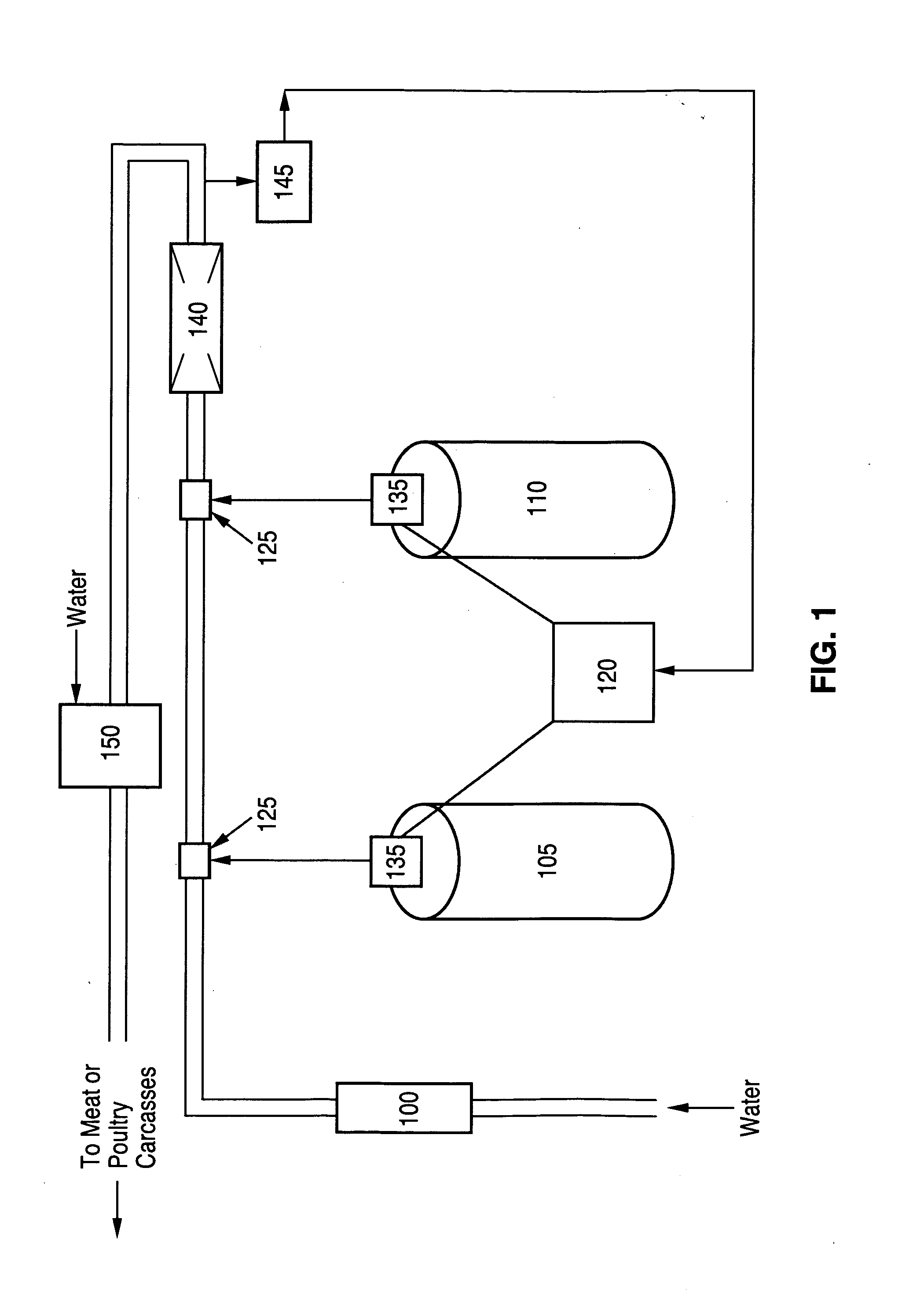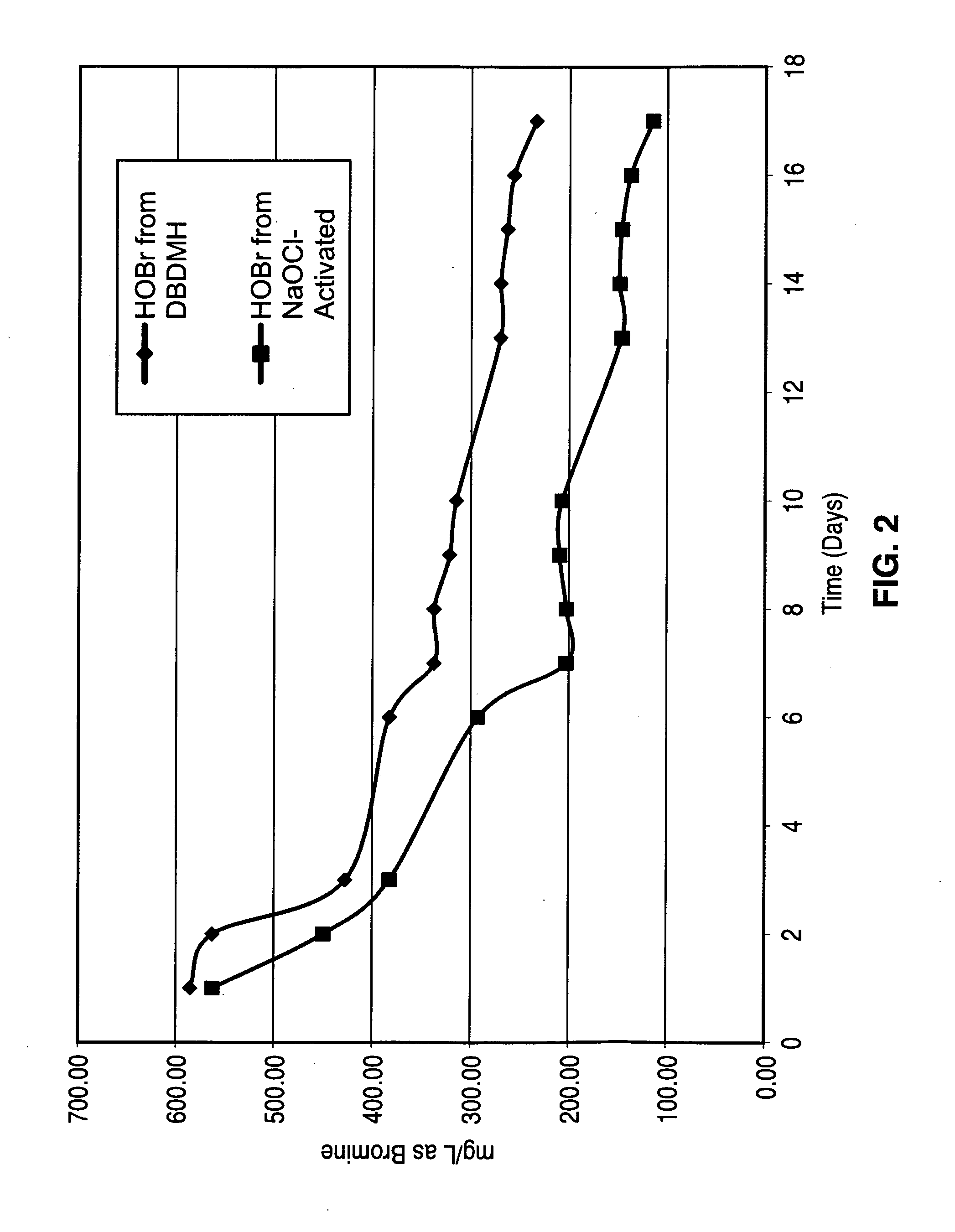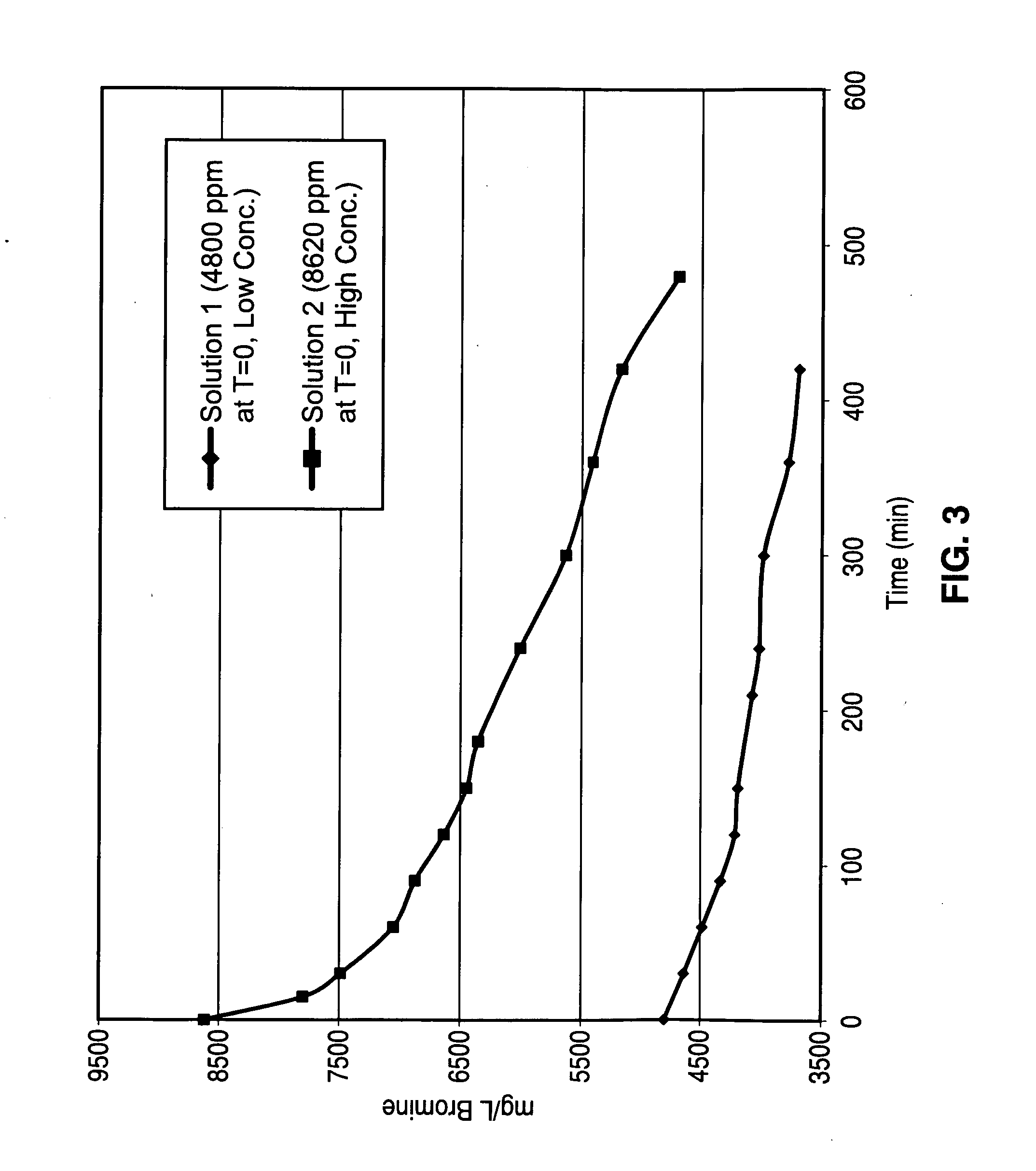Methods and compositions for the reduction of pathogenic microorganisms from meat and poultry carcasses, trim and offal
a technology of meat and poultry carcasses and compositions, applied in the direction of biocide, detergent compounding agents, carcasses disinfection, etc., can solve the problems of unstable activated solution, waste of reactants, biocide to be prepared, etc., to achieve the effect of reducing pathogenic microorganisms and maximizing the activation of bromide ions
- Summary
- Abstract
- Description
- Claims
- Application Information
AI Technical Summary
Benefits of technology
Problems solved by technology
Method used
Image
Examples
examples 1-3
[0062]The apparatus represented in FIG. 1 was used to continuously generate solutions of HOBr that were close to 300 ppm (as Br2). The results are shown in Table 2.
TABLE 2Flow Rates and Dilution RatiosBr2concentrationDilution24% HBrenteringratio atWater flowflow12.5% NaOClproportionalproportionalFinal Br2Examplethroughthroughthrough pumpdispenserdispenserConcentration / No.flowmeter 100 L / minpump 35 ml / min35 ml / min150 / ppm150ppm13.78538.468.9586519.630023.78552.594.7805026.830031.00.5250.991289N / A289
example 4
[0063]The relative stability of HOBr derived from NaOCl-activated HBr and HOBr derived from DBDMH was compared side-by-side. A solution of HOBr (600 ppm as bromine) was used in the comparison because this is the amount of bromine that typically exits the commercial DBDMH feeders when the solid product is dissolved. The activity of the solutions was measured using the DPD Total chlorine colorimetric method. Solutions were stored in the dark to prevent photodegradation due to UV light exposure. The temperature ranged from 70-75° F. for the duration of the test.
[0064]The HOBr decay profiles for the 600 ppm (as bromine) solutions derived from NaOCl-activated HBr solution and DBDMH solution are plotted in FIG. 2.
[0065]FIG. 2 demonstrates that the presence of DMH does have a stabilizing effect on the HOBr, but contrary to the teachings of Howarth et. al, it is not an essential requirement for production of a solution which might be stored several days prior to use. The half-lives of the H...
example 5
[0068]The previous examples (1-4) demonstrate that solutions of sodium hypochlorite readily activate HBr to HOBr instantaneously and, depending on the final concentration of HOBr, typically with 100% conversion. Thus, it would be expected that all hypochlorite solutions (e.g. potassium hypochlorite (KOCl)), would work in an identical fashion. This example determined the efficiency of the process when solid sources of hypochlorite, such as calcium and lithium hypochlorite, are used to activate HBr. In this example, solid calcium hypochlorite was used to activate HBr to determine the efficiency of bromide ion utilization and the stability of the resultant activated solutions.
[0069]In this example, 48% HBr was activated using three different techniques of using solid calcium hypochlorite (70% expressed as Cl2). Techniques 1 and 2 utilized stoichiometric amounts of 48% HBr and solid calcium hypochlorite (70% as Cl2) to generate a solution of HOBr (theoretically 5000 ppm expressed as bro...
PUM
 Login to View More
Login to View More Abstract
Description
Claims
Application Information
 Login to View More
Login to View More - R&D
- Intellectual Property
- Life Sciences
- Materials
- Tech Scout
- Unparalleled Data Quality
- Higher Quality Content
- 60% Fewer Hallucinations
Browse by: Latest US Patents, China's latest patents, Technical Efficacy Thesaurus, Application Domain, Technology Topic, Popular Technical Reports.
© 2025 PatSnap. All rights reserved.Legal|Privacy policy|Modern Slavery Act Transparency Statement|Sitemap|About US| Contact US: help@patsnap.com



